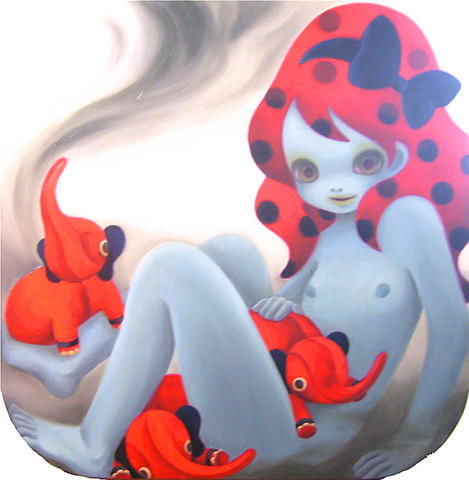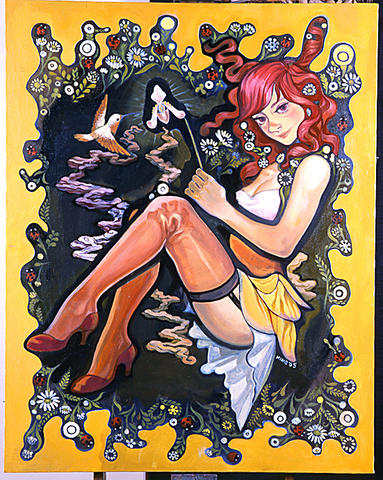Animamix art is taking the art world by storm - at least for the younger generation. Animamix, a portmanteau of "animation" and "comics," is as much a reflection of contemporary obsessions with virtual reality as it is an art movement.
As such, animamix artists are active in all areas of the creative industries - not just animation and comics - and cover a broad range of mediums including painting, sculpture, video, murals and installations - all of which can be seen at Taipei's Sun Yat-sen Memorial Hall beginning tomorrow. The exhibition is called New Epoch of Animamix Aesthetics and features 40 artists from Asia and America.
An obsession with and worship of youth, vivid visuals and bright colors are the hallmarks of animamix and other visual media that have gained popularity over the past 20 years.

PHOTOS: COURTESY OF METAPHYSICAL ART GALLERY
This seems natural as a whole generation has grown up on a bevy of comics, computer games and television programs which is becoming an innate part of cultures worldwide. As the Internet proliferates, multicultural voices are included in dialogue and artistic creation.
"Animamix Art is not about animation or comics themselves," said curator and Shih Chien University professor Victoria Lu (陸蓉之) in a recent interview. "It is an all-inclusive concept of the aesthetic choice of the new century."
It's an aesthetic, Lu says, that celebrates different dimensions of time and space.

"It is a kind of art beyond art, time beyond time, space beyond space and life beyond life," she said.

April 28 to May 4 During the Japanese colonial era, a city’s “first” high school typically served Japanese students, while Taiwanese attended the “second” high school. Only in Taichung was this reversed. That’s because when Taichung First High School opened its doors on May 1, 1915 to serve Taiwanese students who were previously barred from secondary education, it was the only high school in town. Former principal Hideo Azukisawa threatened to quit when the government in 1922 attempted to transfer the “first” designation to a new local high school for Japanese students, leading to this unusual situation. Prior to the Taichung First

The Ministry of Education last month proposed a nationwide ban on mobile devices in schools, aiming to curb concerns over student phone addiction. Under the revised regulation, which will take effect in August, teachers and schools will be required to collect mobile devices — including phones, laptops and wearables devices — for safekeeping during school hours, unless they are being used for educational purposes. For Chang Fong-ching (張鳳琴), the ban will have a positive impact. “It’s a good move,” says the professor in the department of

On April 17, Chinese Nationalist Party (KMT) Chairman Eric Chu (朱立倫) launched a bold campaign to revive and revitalize the KMT base by calling for an impromptu rally at the Taipei prosecutor’s offices to protest recent arrests of KMT recall campaigners over allegations of forgery and fraud involving signatures of dead voters. The protest had no time to apply for permits and was illegal, but that played into the sense of opposition grievance at alleged weaponization of the judiciary by the Democratic Progressive Party (DPP) to “annihilate” the opposition parties. Blamed for faltering recall campaigns and faced with a KMT chair

Article 2 of the Additional Articles of the Constitution of the Republic of China (中華民國憲法增修條文) stipulates that upon a vote of no confidence in the premier, the president can dissolve the legislature within 10 days. If the legislature is dissolved, a new legislative election must be held within 60 days, and the legislators’ terms will then be reckoned from that election. Two weeks ago Taipei Mayor Chiang Wan-an (蔣萬安) of the Chinese Nationalist Party (KMT) proposed that the legislature hold a vote of no confidence in the premier and dare the president to dissolve the legislature. The legislature is currently controlled